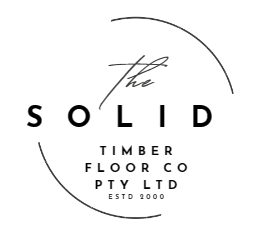Frequently Asked Qustions
Timber floors can appear stunning once finished. The appearance and texture of natural materials in your home can be quite uplifting. Below, we have provided responses to numerous inquiries we have received over time. We trust they fulfill your specific requirements.
Cost of Timber Flooring
1. What is the cost of timber flooring?
2. What factors influence the cost of timber flooring?
3. What is the difference between solid timber and
engineered wood flooring?
4. Is solid wood flooring worth the investment?
5. How can you decide on the right timber flooring for
your needs?
Tips for Cleaning Timber Floors
1. What is the best way to clean wooden or timber floors?
2. What cleaning products are safe for wooden and engineered timber floors?
3. How do you handle stains or tough marks on wooden floors?
4. How often should wooden floors be cleaned?
5. What precautions should be taken to maintain wooden floors?
By following these guidelines, you can ensure your wooden or timber floors remain
clean, beautiful, and durable for years to come.
Tips for Mopping Timber Floors
1. Can you mop wood or timber floors?
2. What type of cleaning solution should you use when
mopping wooden floors?
3. What is the proper technique for mopping timber or wooden floors?
4. How often should wooden floors be mopped?
5. What precautions should be taken when mopping wooden
floors?
By following these tips, you can safely mop wooden floors
while maintaining their durability and beauty.
Tips for Polishing Timber Floors
1. What is the best way to polish hardwood or wooden
floors?
2. How do I prepare the floor before polishing?
3. What type of polish should I use for my floors?
4. How often should I polish my wooden floors?
5. What tools or equipment do I need to polish wooden
floors?
By
following these steps—preparing the surface, choosing the right polish, and
using the appropriate tools—you can achieve polished, well-maintained wooden
floors that enhance the beauty of your home.
Tips for Sanding Timber Floors
1. Why is sanding floorboards necessary?
2. What tools and materials are needed for sanding
floorboards?
3. How do you prepare floorboards for sanding?
4. What is the correct process for sanding floorboards?
5. What should you do after sanding floorboards?
By following these steps, you can effectively sand and
rejuvenate your floorboards, improving both their appearance and longevity.
Tips for Installing Timber Flooring
1. What are the main methods for installing hardwood or
timber flooring?
2. How do you prepare the subfloor for hardwood or timber flooring installation?
3. What tools and materials are needed to install
hardwood flooring?
4. What are the key steps to lay hardwood or timber
flooring?
5. What are common challenges when installing wooden floors, and how can they be avoided?
By following these steps and preparing adequately, you can
successfully install hardwood or timber flooring, achieving a durable and visually appealing result.
Tips for Repairing Scratched Wooden Floors
1. How do you identify the type and severity of scratches
on a wood floor?
2. How can you repair minor scratches on hardwood or wood floors?
3. What’s the best way to fix deep scratches in wood
floors?
4. What tools or products are useful for removing
scratches from hardwood floors?
5. How can you prevent scratches on hardwood or wood floors in the future?
By understanding the type of damage and using the right
techniques, you can effectively repair scratches on wood floors and keep them
looking beautiful for years to come.
Understanding Engineered Timbers
1. What is engineered timber?
2. What is engineered timber flooring?
3. How does engineered timber compare to other flooring types?
Understanding Flooring Options
Each flooring option caters to specific needs.
Solid hardwood
is ideal for timeless elegance and longevity but comes at a high cost and maintenance effort.
Engineered timber
offers a similar look with better moisture resistance, making it a practical yet stylish option.
Laminate
is cost-effective and durable for busy households but lacks the warmth and
refinishing capabilities of real wood.
Vinyl planks
are a great choice for affordability and waterproofing, suitable for areas like kitchens and bathrooms,
while hybrid flooring
provides an all-round solution with durability, water resistance, and easy installation, making it an excellent modern option for most homes.
Choosing the best flooring depends on balancing budget, style, and
the functional requirements of the space.
